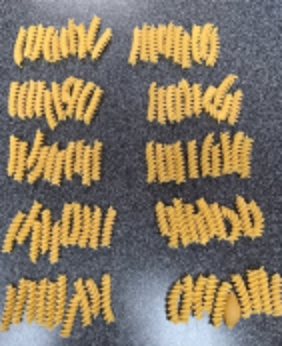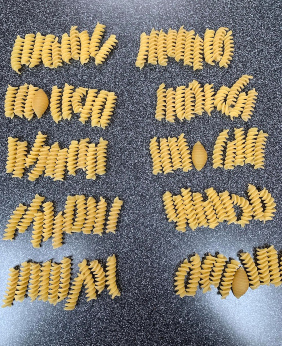Check out our entire series explaining the science involved in the coronavirus pandemic. Sign up to receive our coronavirus update each week.
How can we know how much coronavirus is out there without massive testing?
If we want to start sending people back to work safely, and we know that people who are presympotmatic or asymptomatic can spread the virus, we need to be able to test lots of people, repeatedly, to make sure they’re not carrying the virus into their workplaces. That means a massive number of tests. Maybe not as many as you might have thought, though, thanks to ... wait for it ... math!
And … poo!
(Don’t yell at me for using that term. It’s the technical term used by the researchers mentioned below. I’m just reporting here.)
Intrigued yet?
First, math: a simple example, then a more complicated one.
Let’s say you want to screen a lot of people for coronavirus, and most of them will not be infected. In a situation like that, you can dramatically reduce the number of tests needed by pooling samples. Allow me to illustrate with some expensive, customized, hi-tech science equipment:

Each piece of pasta represents one person. There are one hundred people. Ninety-nine of them do not have coronavirus (the technical term for these people is “rotini”). One of them is infected (the “large shell” or, if you want to be really precise, the “conchiglia”). I’ve grouped them into sets of ten. How many sets have an infected person? Just one.
One way to identify which people are infected would be to do one hundred tests, one for each person. Total number of tests: 100. Another way, though, would be to test them in sets of ten. In the present case, only one of those tests would give a positive result. You could then re-test each of the people in that set to find which among them are infected. Now the total number of tests required is just 20 (10 sets of 10, then 10 tests for the infected set).
You can see how this system only really is advantageous if the rate of infection is low. In the next elaborate experimental set-up, the rate of infection has risen from 1% to 3%. Now, instead of 100 tests, you’d have to do 10 sets, then retest 30 samples, for a total of 40 tests. Still better than 100, though.

At what level of infection does pooling yield diminishing returns? I’ll leave you to figure that out with your own scientific supplies. (You could also use Legos, cereal, or small candies. I was going to use chocolate chips, but I couldn’t keep the sample size from mysteriously decreasing.) You might notice that by adjusting the size of your initial pools, you can make pooling pay off with somewhat higher infection rates.
So that’s pooling. Pretty great, right? The idea has been around for a while—it’s still used to test donated blood for various pathogens such as HIV.
I thought that was cool, but then I found this great article that also uses math! But this time, much more sophisticated and much more cool math. In fact, math I’m not really licensed to practice. I’ll try to explain, though.
Suppose that you want to screen a large group of people, most of whom are probably not infected. Say, 300 passengers who want to get on a plane to fly somewhere (remember when we used to do that?). You could test them in pools, of course, maybe even pretty big pools if the number of infected is really low, but what if one of the pools is positive? Now you need to do another round of tests to identify the infected person. If the testing process takes an hour, running two rounds of tests means having 300 people (some of them potentially infectious) sitting in the airport lounge for two hours. That’s dangerous, and it also will make people really cranky. But algorithms can help.
An algorithm is just a way to break down a problem into steps that you solve sequentially to reach the answer. Computers are really good at applying algorithms, so a lot of computer coding involves setting up algorithms for the computer to perform. There are a number of apps out there that students can use to learn how to code—here is a list of good ones vetted by Common Sense Media, an organization that works to help families and teachers make sure kids use media and technology wisely.
So, back to our airport where everyone is still waiting. Wouldn’t it be nice to identify the infected people in just one round of testing? An algorithm can make that possible. By carefully designing the test groups so that each person is included in several groups, you can theoretically identify infected individuals after just one round of testing. Here’s how the IEEE Spectrum article describes it, assuming a situation where there’s only one infected person:
If we mix the 100 people into random pools of 30 different people in each pool so that each person appears in six pools, we can sample each person six times using 20 measurements (multiplying 100 people by six gives us 600 samples, dividing those into pools of 30 means we will test 20 times). That, in most cases, will give us enough information to identify the one person who is positive.
That’s pretty cool—with just 20 tests, you not only find the infected person (just as with our original example), you find that person in one round of testing, allowing the other 99 to get on the plane a lot sooner. Without going into details, this approach also only is advantageous when the number of infected people is low.
That’s the math part, but I promised you poo and I’m not going to disappoint.
Remember how all those math examples really only worked if the number of infected people is low? Well, how might you figure out whether prevalence is low in your community—and so whether it makes sense to use pooled testing—without testing everyone first? One clever answer is by testing sewage. In this story from National Public Radio, researchers Stephanie Loeb and Krista Wigginton explain that they are testing sewage to track how much virus is in a community. When a person is sick, virus is shed into their digestive tract and ends up in their poo. The virus is not infectious anymore, but its genetic material can be detected. The more infected people in the community, the more viral RNA ends up in the sewers.
So there you have it. If you decide to become a mathematician, you could discover clever ways to maximize the efficiency of testing. But if you decide to become a scientist, you could spend your life studying poo. The choice is yours, but we will all be glad for your contributions.


